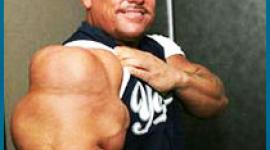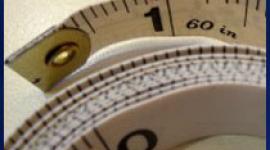Body Dysmorphic Disorder in Children
A Child's distorted view of how they look
What is Body Dysmorphic Disorder? People with body dysmorphic disorder (BDD) worry about their appearance. They may worry that their skin is scarred, their hair is thinning, their nose is too big, or something else is wrong with how they look. When others tell them that they look fine or that the flaw they perceive is minimal, people with BDD find it hard to believe this reassurance.
My child seems to have a very distorted view of how she looks. What's going on?
 Your child may have Body Dysmorphic Disorder (BDD). This means being wrapped up in their appearance way more than normal, and obsessing about real or imagined defects in how they look. It is a kind of distorted thinking. It affects males and females about equally. Find out more about BDD, including list of clues to BDD's presence, and books and articles about the disorder. If you suspect your child has BDD or body image problems, you should seek professional help. The Butler Hospital BDD and Body Image Program recommends getting an evaluation from a psychiatrist or licensed psychologist with expertise in treating BDD. If you can't find anyone with this expertise, then find someone with expertise in treating obsessive-compulsive disorder (OCD), as OCD seems to be related to BDD.
Your child may have Body Dysmorphic Disorder (BDD). This means being wrapped up in their appearance way more than normal, and obsessing about real or imagined defects in how they look. It is a kind of distorted thinking. It affects males and females about equally. Find out more about BDD, including list of clues to BDD's presence, and books and articles about the disorder. If you suspect your child has BDD or body image problems, you should seek professional help. The Butler Hospital BDD and Body Image Program recommends getting an evaluation from a psychiatrist or licensed psychologist with expertise in treating BDD. If you can't find anyone with this expertise, then find someone with expertise in treating obsessive-compulsive disorder (OCD), as OCD seems to be related to BDD.
People with BDD spend a lot of time thinking - generally for at least an hour a day - about their perceived appearance flaw. Some people say they're obsessed. Most find that they don't have as much control over their thoughts about the body flaw as they would like.
In addition, the appearance concerns cause significant distress (e.g., anxiety or depression) or significant problems in functioning. Although some people with this disorder manage to function well despite their distress, most find that their appearance concerns cause problems for them. They may find it hard to concentrate on their job or school work, which may suffer, and relationship problems are common. People with BDD may have few friends, avoid dating, miss school or work, and feel very self-conscious in social situations. They generally have very poor quality of life.
The severity of BDD varies. Some people experience manageable distress and are able to function well, although not up to their potential. Others find that this disorder ruins their life. Some commit suicide.
How Do I Know If I Have BDD? (Body Dysmorphic Disorder, BDD, Quiz)
Ask yourself the following questions to determine whether you might have BDD.
1) Are you very concerned about the appearance of some parts(s) of your body which you consider especially unattractive?
Yes or No
If yes: Do these concerns preoccupy you? That is, do you think about them a lot and wish you could worry less?
Yes or No
2) How much time do you spend thinking about your defect(s) per day on average? Add up all the time you spend on this.
- Less than 1 hour a day
- 1-3 hours a day
- More than 3 hours a day
3) Is your main concern with your appearance that you aren't thin enough or that you might become too fat?
Yes or No
4) What effect has your preoccupation with your appearance had on your life?
- Has your defect(s) often caused you a lot of distress, torment, or emotional pain? Yes or No
- Has your defect(s) often significantly interfered with your social life? Yes or No
- Has your defect(s) often significantly interfered with your school work, your job, or your ability to function in your role (e.g., as a homemaker)? Yes or No
- Are there things you avoid because of your defect(s)? Yes or No
You're likely to have BDD if you gave the following answers:
Question 1: Yes to both parts.
Question 2: Answer b or c.
Question 3: While a "yes" answer may indicate that BDD is present, it is possible that an eating disorder is a more accurate diagnosis.
Question 4: Yes to any of the questions.
Please note that the above questions are intended to screen for BDD, not diagnose it; the answers indicated above can suggest that BDD is present but can't necessarily give a definitive diagnosis.
 To your dismay, your daughter has started to complain more and more about the appearance of her eyelids. She grudgingly compares them to those of her classmates. You frequently catch her standing before a mirror, scrutinizing their appearance. When you try to discuss your concerns, she becomes defensive. To make matters worse, you've observed her reading materials about cosmetic surgery.
To your dismay, your daughter has started to complain more and more about the appearance of her eyelids. She grudgingly compares them to those of her classmates. You frequently catch her standing before a mirror, scrutinizing their appearance. When you try to discuss your concerns, she becomes defensive. To make matters worse, you've observed her reading materials about cosmetic surgery.
How do you know if your daughter is simply experiencing a typical stage in adolescence or if she has a more complex problem? Teens seem to worry incessantly about their weight and appearance, but some may become obsessed with a specific flaw or perceived defect. Along with eating disorders, body dysmorphic disorder (BDD) has become a growing concern for young adults.
The severity of this disorder varies. Some are able to function and cope with daily life, whereas others experience paralyzing symptoms of depression, anxiety, and avoidance of social situations.
"These adolescents have a very distorted view of how they look, and it does not match how other youth see them," says Katharine Phillips, MD, director of the Body Image Program at Butler Hospital in Providence, Rhode Island.
Hope for BDD Sufferers
There is hope for BDD sufferers! Psychiatric treatment is often effective in decreasing BDD symptoms and the suffering it causes. The treatments that appear most effective are certain psychiatric medications and a type of therapy known as cognitive-behavioral therapy.
The medications that are most promising are serotonin reuptake inhibitors (SRIs or SSRIs). These medications are fluvoxamine (Luvox), fluoxetine (Prozac), , paroxetine (Paxil), citalopram (Celexa), escitalopram (Lexapro) and clomipramine (Anafranil). These medications are not addicting and are usually well tolerated. They can significantly relieve BDD symptoms, diminishing bodily preoccupation, distress, depression, and anxiety; significantly increasing control over one's thoughts and behaviors; and improving functioning. In some cases, they are lifesaving.
Cognitive-behavioral therapy is a here-and-now type of therapy in which the therapist helps the person with BDD resist compulsive BDD behaviors (for example, mirror checking) and face avoided situations (for example, social situations). Cognitive approaches include helping the person with BDD develop a more realistic view of their appearance. It's important to determine whether a therapist has been specifically trained in cognitive-behavioral therapy. Other types of treatment (for example, counseling or psychotherapy) do not appear to be effective when used alone for BDD, although more research is needed on what treatments are effective for BDD.
next: Body-Image Distortion a Growing Problem Among Women and Men
~ eating disorders library
~ all articles on eating disorders
APA Reference
Tracy, N.
(2008, December 17). Body Dysmorphic Disorder in Children, HealthyPlace. Retrieved
on 2026, January 12 from https://www.healthyplace.com/eating-disorders/articles/body-dysmorphic-disorder-in-children


